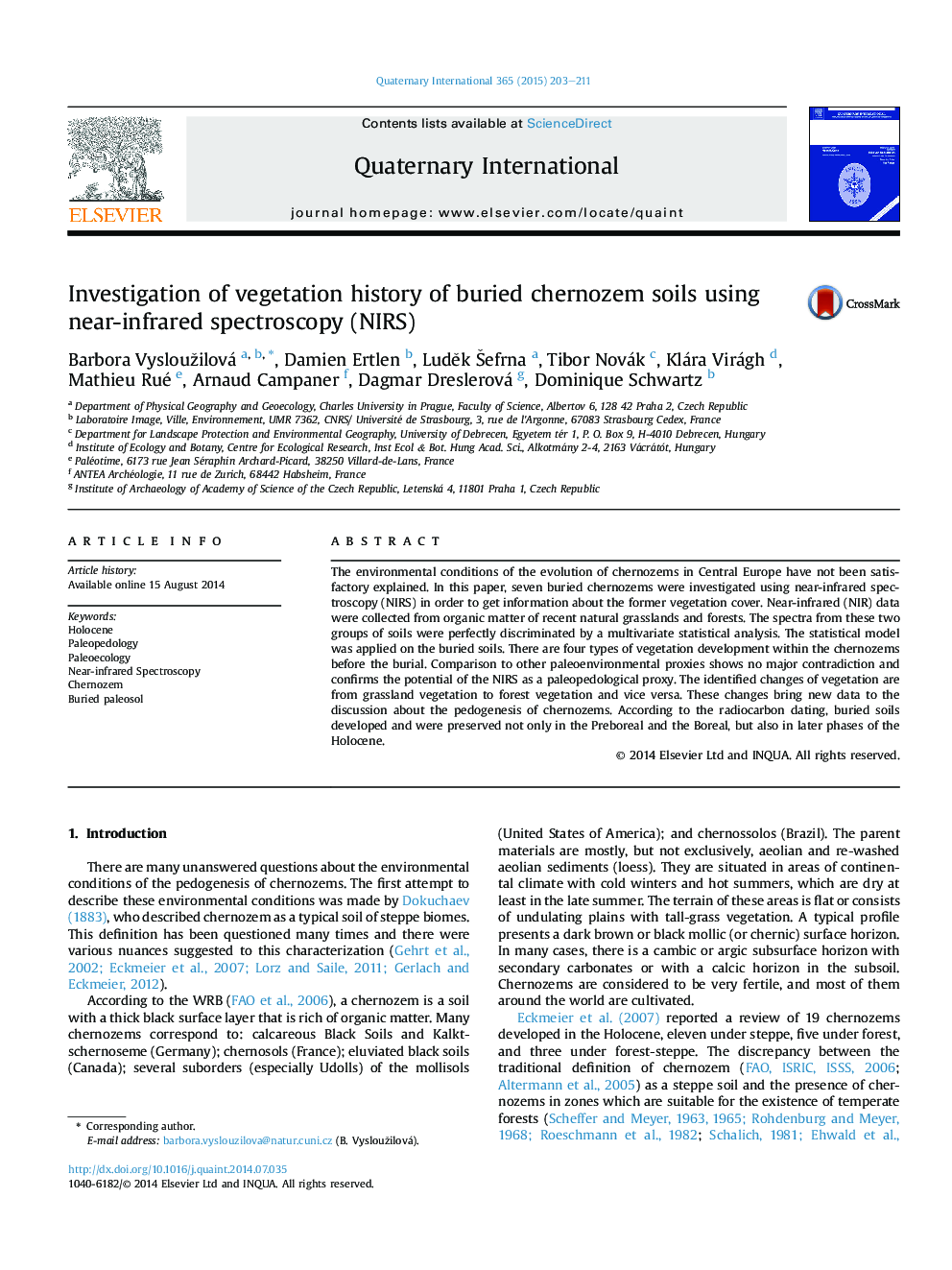| Article ID | Journal | Published Year | Pages | File Type |
|---|---|---|---|---|
| 1040913 | Quaternary International | 2015 | 9 Pages |
The environmental conditions of the evolution of chernozems in Central Europe have not been satisfactory explained. In this paper, seven buried chernozems were investigated using near-infrared spectroscopy (NIRS) in order to get information about the former vegetation cover. Near-infrared (NIR) data were collected from organic matter of recent natural grasslands and forests. The spectra from these two groups of soils were perfectly discriminated by a multivariate statistical analysis. The statistical model was applied on the buried soils. There are four types of vegetation development within the chernozems before the burial. Comparison to other paleoenvironmental proxies shows no major contradiction and confirms the potential of the NIRS as a paleopedological proxy. The identified changes of vegetation are from grassland vegetation to forest vegetation and vice versa. These changes bring new data to the discussion about the pedogenesis of chernozems. According to the radiocarbon dating, buried soils developed and were preserved not only in the Preboreal and the Boreal, but also in later phases of the Holocene.
